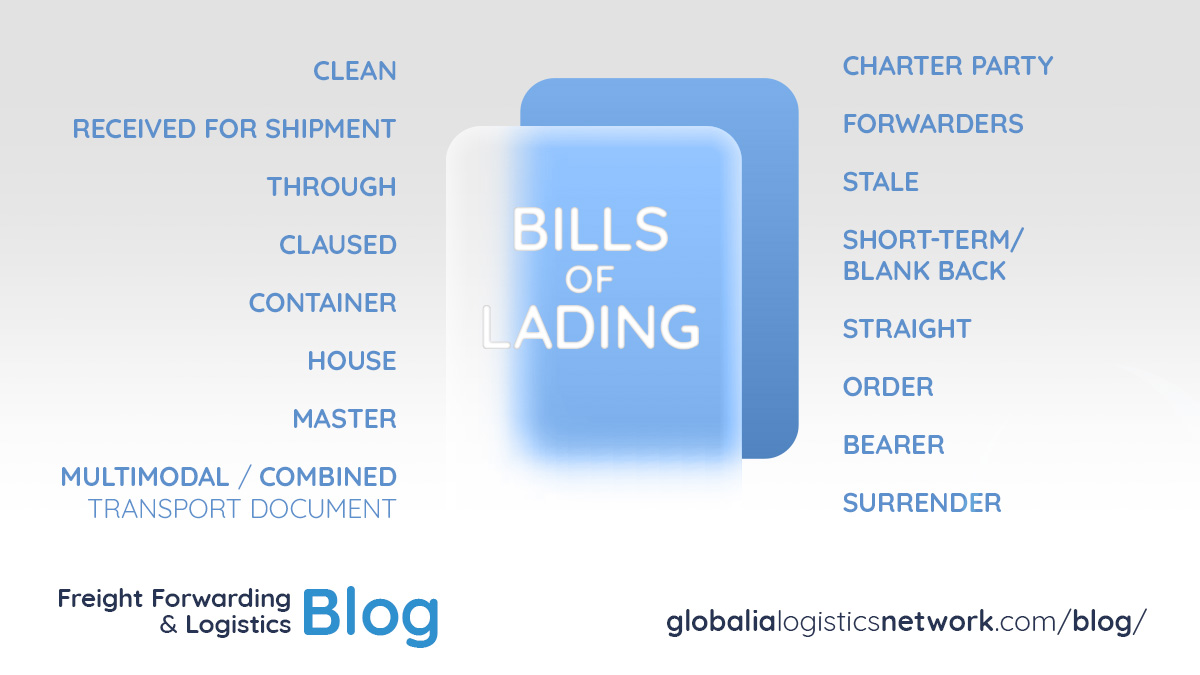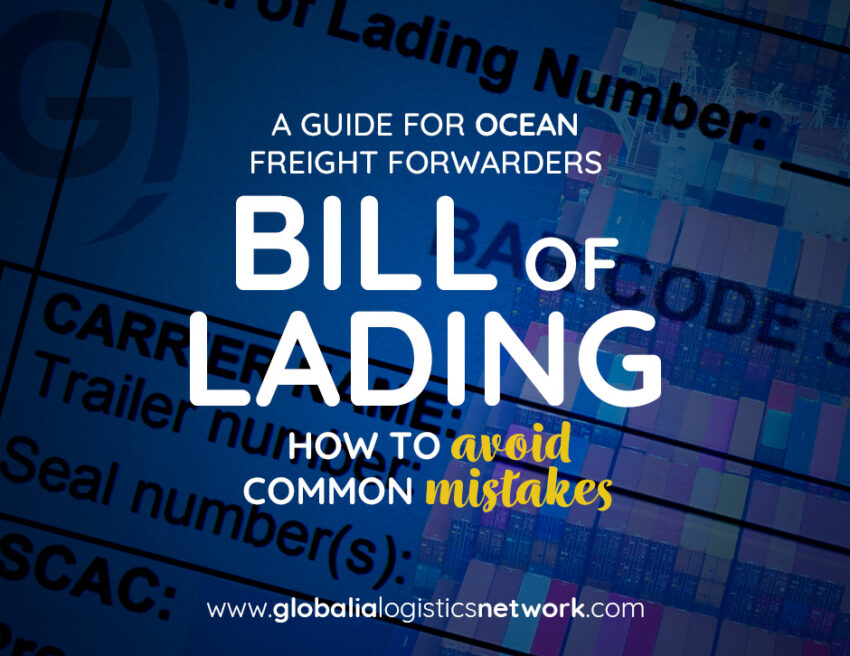In international shipping, few documents are as crucial—or as vulnerable to error—as the Bill of Lading (B/L). Often described as the “passport” of cargo, the Bill of Lading plays multiple critical roles in global trade: it’s a receipt, a contract of carriage, and a document of title. For ocean freight forwarders, it’s also a legal safeguard and a communication tool. But despite its importance, many still fall prey to common pitfalls during its preparation—mistakes that can lead to costly delays, legal complications, or even cargo being held or misdelivered.

As global trade grows more digitized and competitive in 2025, ocean freight forwarders need to be more vigilant than ever. Accuracy, compliance, and attention to detail are no longer optional—they’re essential. Whether you’re handling high-volume containerized shipments or bespoke cargo movements, the integrity of the B/L can make or break a shipment. The good news? Most common mistakes are entirely avoidable with the right knowledge and processes in place.
This blog takes a deep dive into the frequent blunders made during B/L preparation and offers actionable strategies to help ocean freight professionals steer clear of trouble.
Understanding the role of the Bill of Lading for ocean freight forwarders
Before we dive into the errors, it’s worth revisiting why the B/L is so important in the first place. A single document with three powerful purposes: it acts as evidence of the contract between shipper and carrier, it serves as a receipt of goods loaded aboard the vessel, and it functions as a negotiable document of title.
For ocean freight forwarders, preparing an accurate and legally compliant B/L is essential not just for smooth shipping but also for building trust with clients and partners. Any mistake—even a typo—can derail customs clearance, delay payments, or result in claims. Moreover, many forwarders operate under tight timelines and handle large volumes of paperwork, making the likelihood of human error dangerously high if best practices aren’t followed.
Mistake #1: Inaccurate cargo descriptions
One of the most common—and most damaging—errors is incorrectly describing the cargo. Mislabeling cargo can lead to customs penalties, denied insurance claims, or even detention of the goods.
Ocean freight forwarders must ensure that the cargo description on the B/L matches the commercial invoice, packing list, and any certificates required for export or import. Vague terms like “general cargo” or “machinery” are not sufficient. The B/L should include details like the correct HS code, number of units, packaging type, weight, and exact nature of goods.
Failure to be precise not only raises red flags at customs but can also expose the shipper to claims of misrepresentation, especially in the case of hazardous or temperature-sensitive goods.
Mistake #2: Misstating the parties involved
Another critical error is entering incorrect information for the shipper, consignee, or notify party. Ocean freight forwarders often juggle shipments for multiple clients, which can sometimes lead to confusion or copy-paste mishaps.
Getting the names, addresses, and contact information right is non-negotiable. Mistakes here can cause serious legal issues, especially if the B/L is being used as a negotiable document in a letter of credit transaction. An incorrectly listed consignee might be unable to claim the goods at the port, leading to demurrage, storage fees, or even abandonment of cargo.
To avoid this, always double-check the booking request and cross-reference the client’s shipping instructions with the commercial documentation. Any ambiguities should be clarified before finalizing the B/L.
Mistake #3: Inconsistent dates
Timing is everything in shipping. The B/L date is not just a formality—it can determine freight rates, validity of the shipment for trade finance, and whether cargo is subject to seasonal surcharges.
Ocean freight forwarders must ensure the sailing date, issue date, and onboard date are consistent and accurate. In particular, “Shipped on Board” dates are closely scrutinized in letters of credit, and discrepancies can result in banks rejecting the document entirely.
Automated systems now help reduce human error here, but manual entries still require vigilance. It’s best to confirm directly with the carrier or use real-time updates from carrier portals to ensure date accuracy.
Mistake #4: Wrong type of Bill of Lading
Choosing the incorrect type of B/L is a surprisingly frequent mistake. There are various types—Straight, Order, Sea Waybill, Express Release—and each serves a specific purpose.
For example, a Straight B/L is non-negotiable and consigned directly to a specific receiver, while an Order B/L can be endorsed and transferred to another party. Using the wrong one could delay release of cargo or create issues in trade finance.
Ocean freight forwarders need to understand the legal and logistical implications of each type and select the one that best matches the transaction. When in doubt, consult with your client or legal team before proceeding.
Mistake #5: Typos, formatting errors, and copy-paste issues
In a fast-paced logistics office, it’s easy to overlook a typo or duplicate information from a previous shipment. But even minor formatting mistakes can lead to major consequences.
A simple misspelling of a consignee’s name, a reversed digit in the container number, or a swapped port name can confuse customs systems, delay clearance, or void an insurance claim. These “small” errors are often the most common—and the most preventable.
Using digital tools like freight management software with built-in validation checks can help reduce these risks. Many platforms now offer B/L templates, data import functions, and AI-powered proofreading features that minimize manual entry.
Strategies for error-free Bill of Lading preparation
For ocean freight forwarders aiming to stay competitive and compliant in 2025, accuracy in B/L preparation must become second nature. Here are some smart strategies to ensure that every B/L you issue is bulletproof:
-
Implement a Standard Operating Procedure (SOP): Have a checklist that every team member must follow when preparing a B/L. This should include verifying cargo details, consignee data, and shipment dates.
-
Use integrated digital platforms: Automate data entry by linking booking systems, commercial documentation, and B/L software. This not only reduces errors but also speeds up processing times.
-
Double verification: Require a second team member to review each B/L before it’s issued. A fresh pair of eyes often catches what the original preparer might miss.
-
Client confirmation: Send a draft B/L to clients for approval before issuing the final version. This allows any discrepancies to be corrected early in the process.
-
Stay informed of industry updates: Regulations, port codes, and HS codes change frequently. Make sure your team is up to date on changes that could affect B/L data fields.
Conclusion
In the fast-moving world of freight forwarding, the Bill of Lading remains one of the most vital—and vulnerable—documents. Mistakes may be common, but they are by no means inevitable. For ocean freight forwarders, avoiding B/L errors is a matter of discipline, technology, and proper communication. In 2025, with more shipments moving faster across more borders than ever before, even small documentation issues can create massive operational bottlenecks.
By staying vigilant, embracing digital tools, and prioritizing accuracy, forwarders can avoid the costly consequences of B/L errors and position themselves as reliable, detail-oriented logistics partners. In a competitive market, trust is currency—and it starts with getting the basics, like the Bill of Lading, absolutely right.


